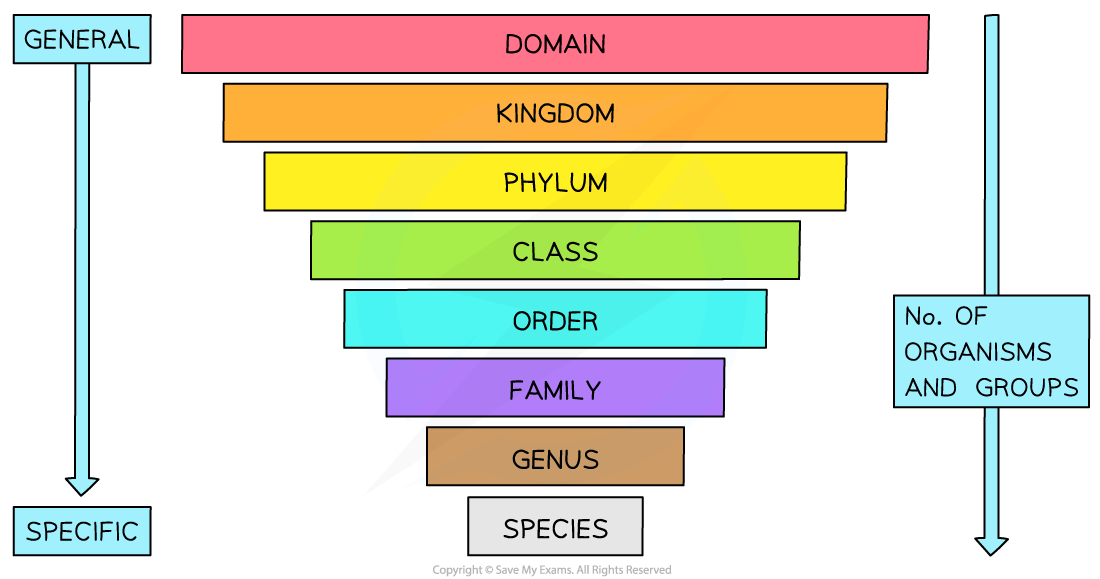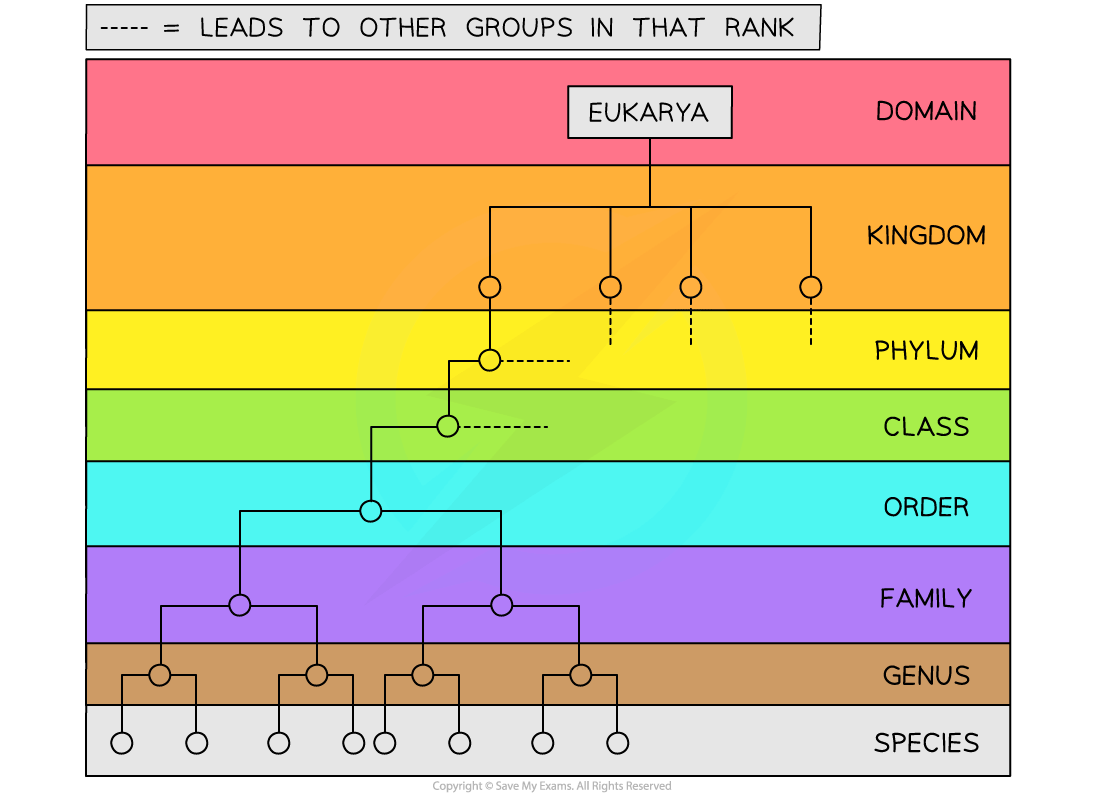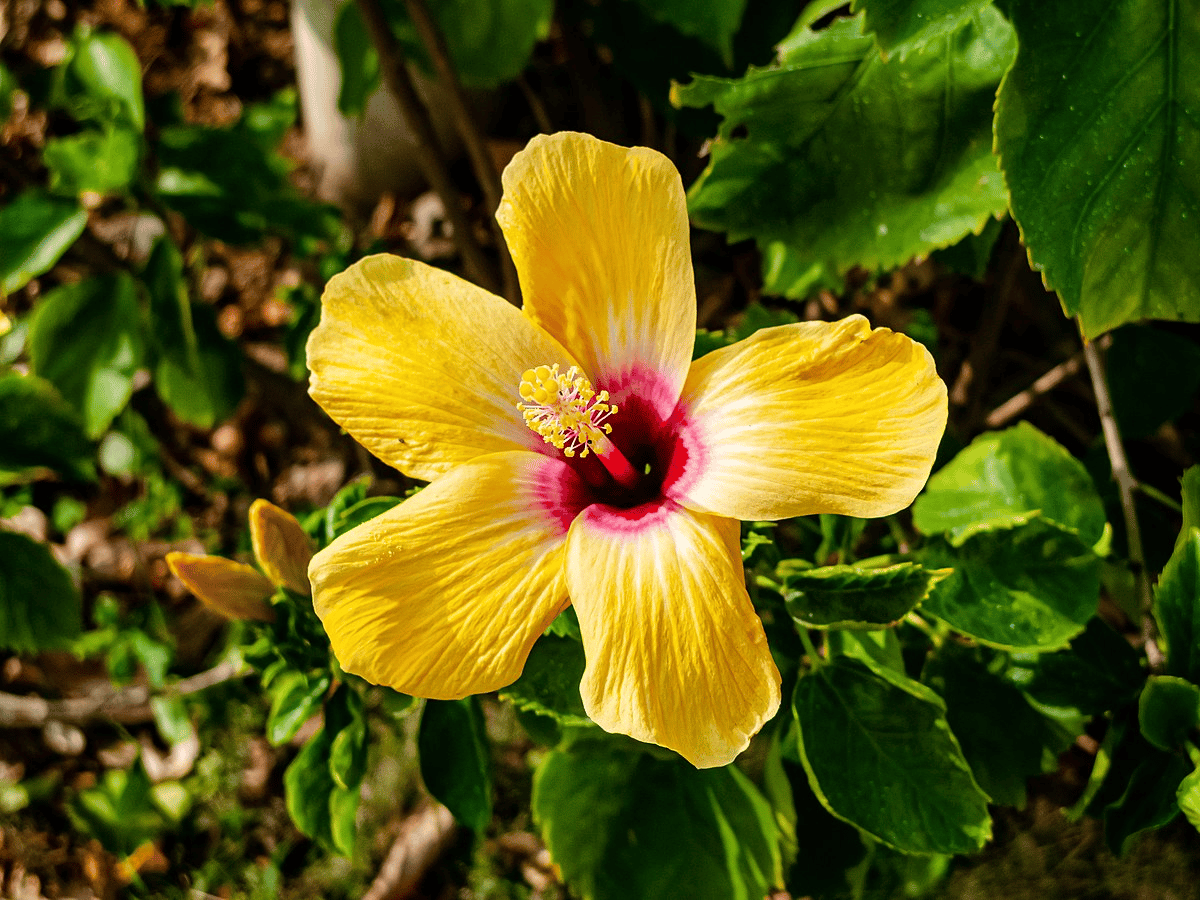Eukarya (Cambridge (CIE) A Level Biology): Revision Note
Exam code: 9700
Eukarya
The hierarchical classification system of organisms in biology is used to organise and group similar organisms together so that evolutionary relationships between organisms can be more easily understood
There are several taxonomic ranks that exist
Species is the lowest taxonomic rank in the system
Similar species can be grouped in a genus
Similar genuses can be grouped in a family
Similar families can be grouped into an order
Similar orders can be grouped into a class
Similar classes can be grouped into a phylum
Similar phyla can be grouped into a kingdom
Similar kingdoms can be grouped into a domain
Domains are the highest taxonomic rank in the system
There are a few different mnemonics that exist to help you remember the different ranks in the taxonomic classification system. You can always make up your own but the one below is super helpful!
The first letters of all the different ranks below the domains can be remembered as:
Kings Play Chess On Fancy Gold Squares
Kingdom Phylum Class Order Family Genus Species

Classification of an organism in the Eukarya domain
Just like the other domains, Eukarya contains the taxonomic hierarchy of kingdom, phylum, class, order, family, genus and species

A wolf is an example of an organism in the Eukarya domain
It can be classified further into its kingdom, phylum, class, order, genus and species
A wolf belongs to the following taxonomic groups:
Domain: Eukarya
Kingdom: Animalia
Phylum: Chordata
Class: Mammalia
Order: Carnivora
Family: Canidae
Genus: Canis
Species: lupus

The Hibiscus rosa-sinensis is another example of of an organism in the Eukarya domain
It is a colourful flowering plant
It belongs to the following taxonomic groups:
Domain: Eukarya
Kingdom: Plantae
Phylum: Angiospermae
Class: Dicotyledonae
Order: Malvales
Family: Malvaceae
Genus: Hibiscus
Species: rosa-sinensis

Taxonomic rank | Wolf | Hibiscus |
|---|---|---|
Domain | Eukarya | Eukarya |
Kingdom | Animalia | Plantae |
Phylum | Chordata | Angiospermae |
Class | Mammalia | Dicotyledonae |
Order | Carnivora | Malvales |
Family | Canidae | Malvaceae |
Genus | Canis | Hibiscus |
Species | lupus | rosa-sinensis |
Examiner Tips and Tricks
The Latinised name of a species always consists of two words: the genus and species. This means when provided with the Latin name of a species you are automatically provided with information about the last two taxonomic ranks that the organism belongs to. Remember this when being asked to show or explain the classification of an organism in the exam.

Unlock more, it's free!
Did this page help you?